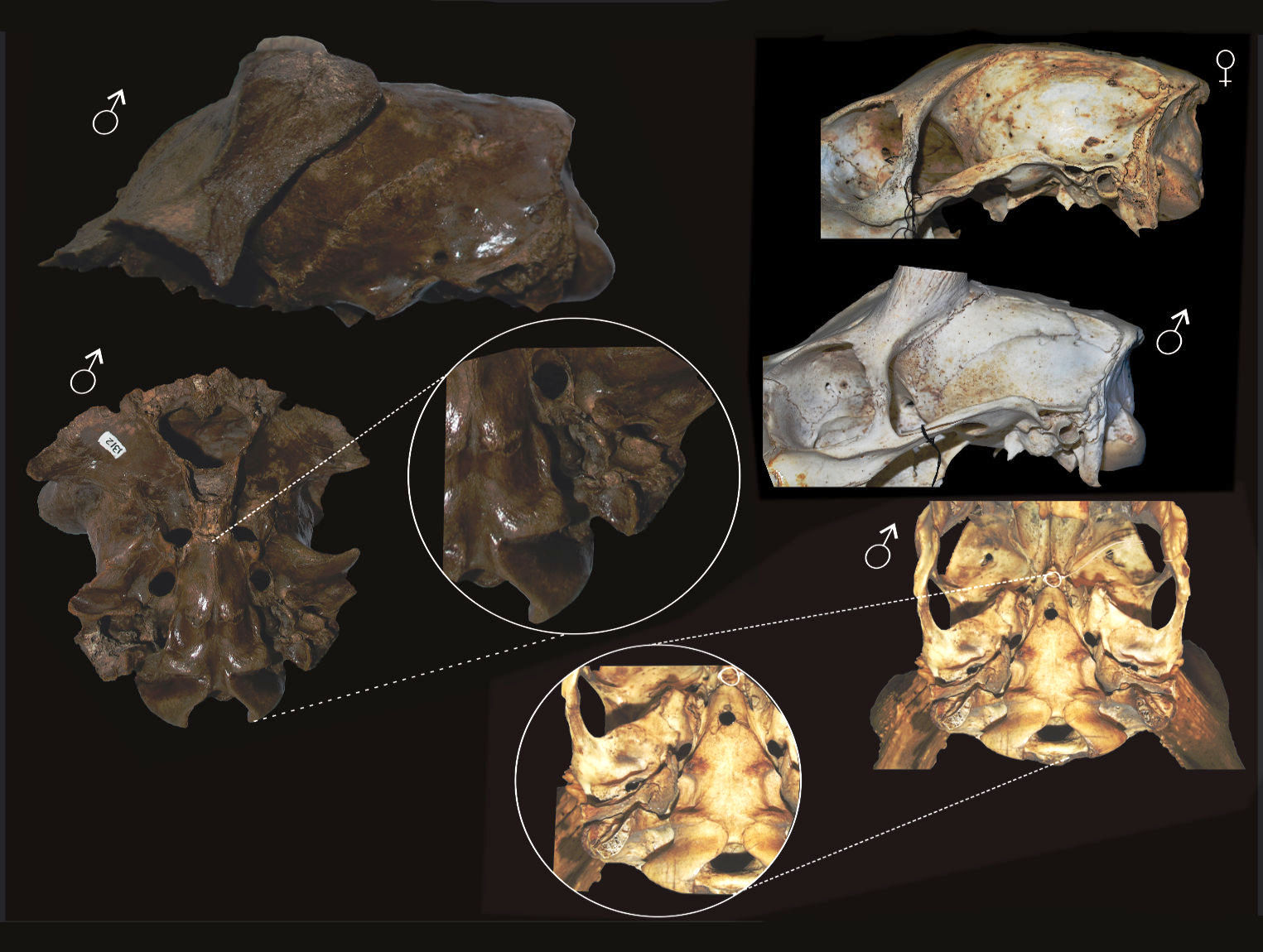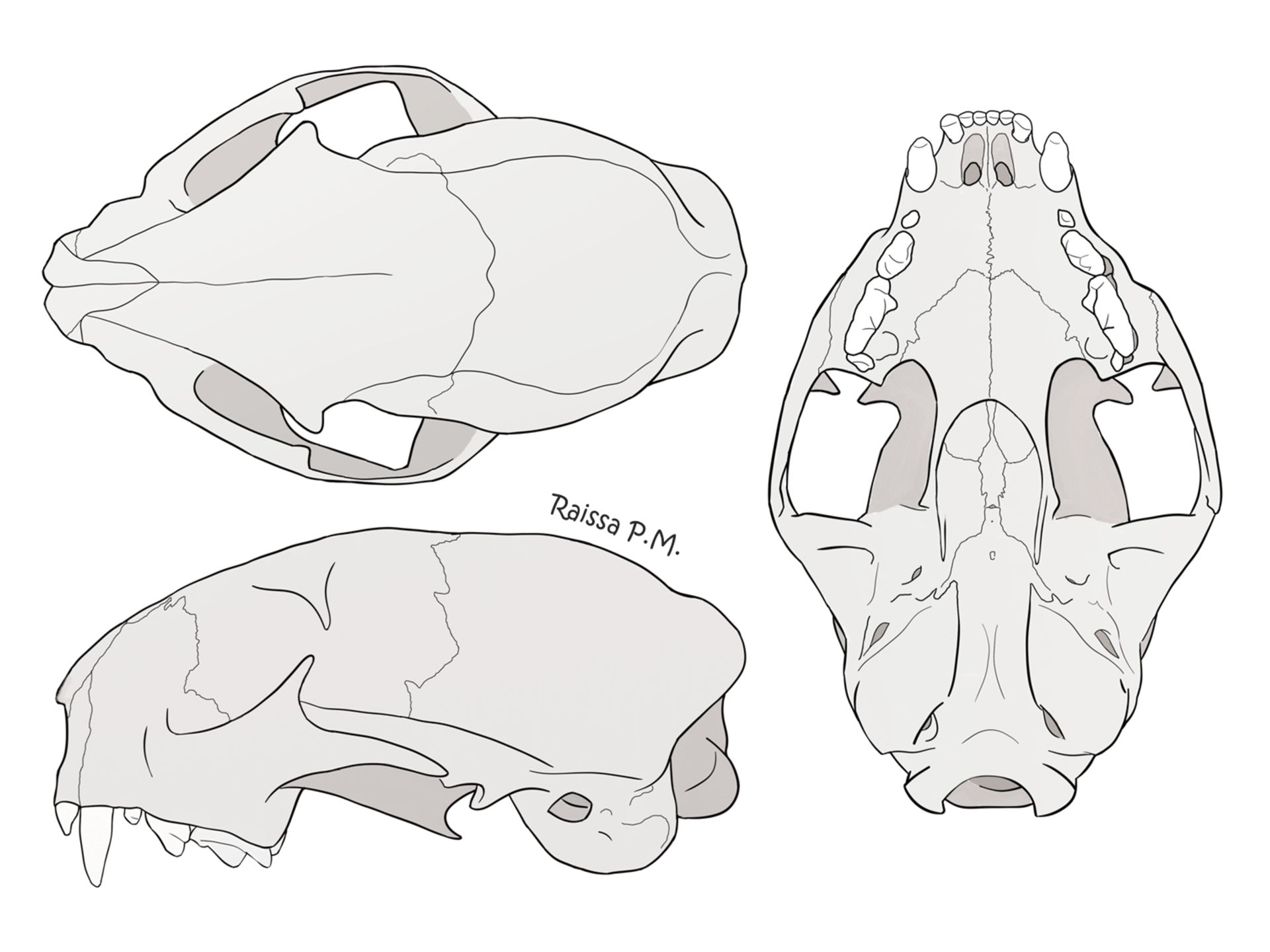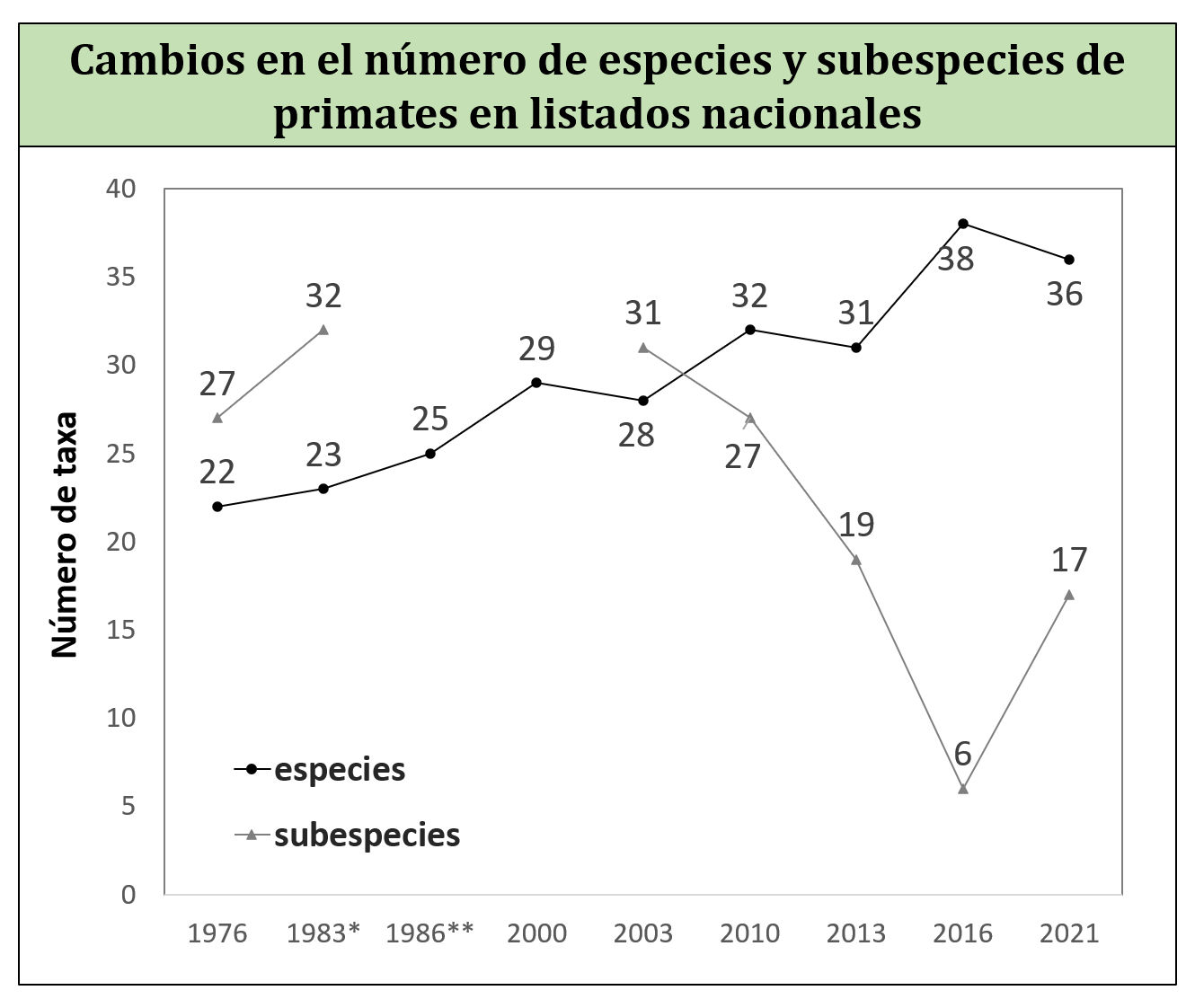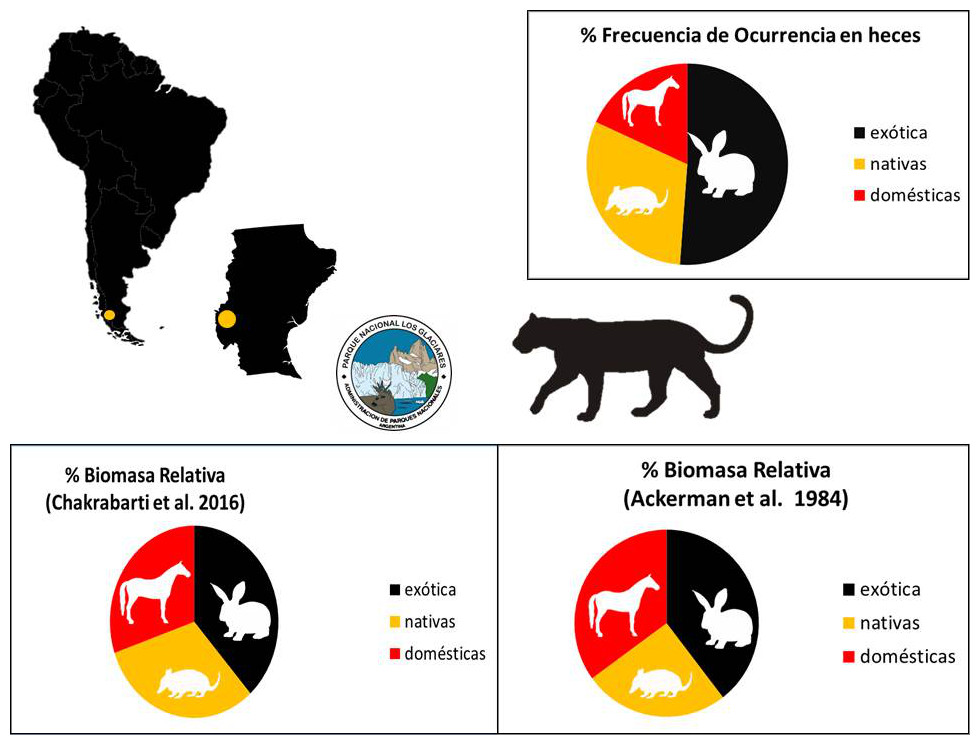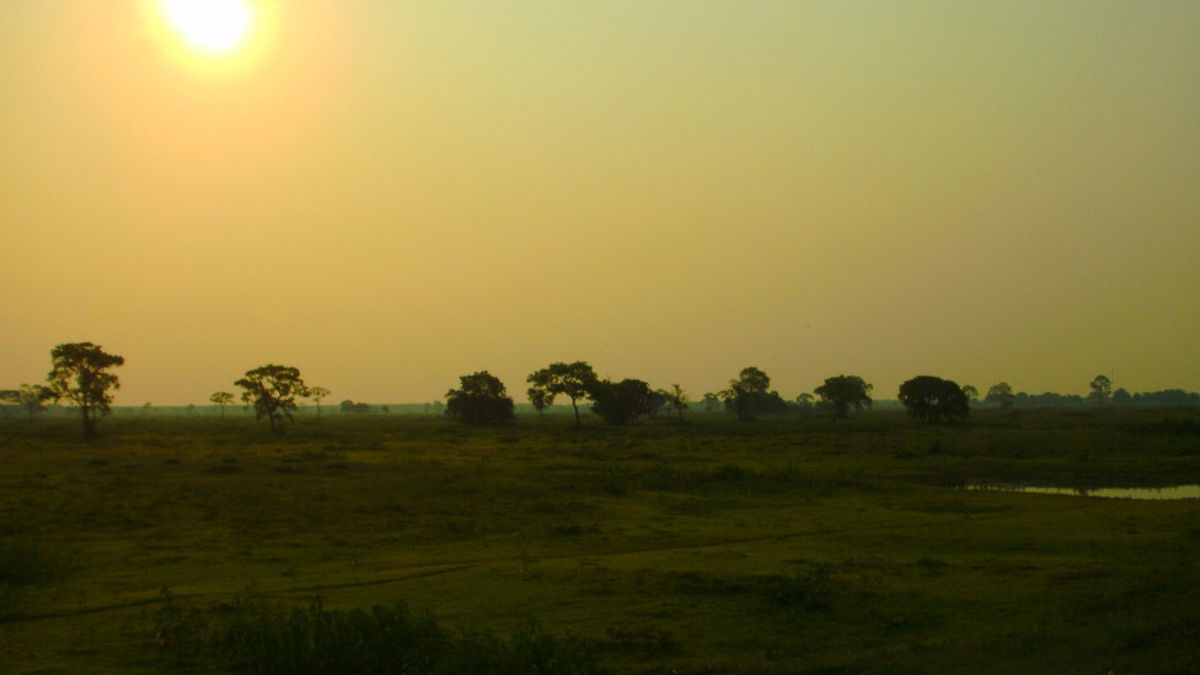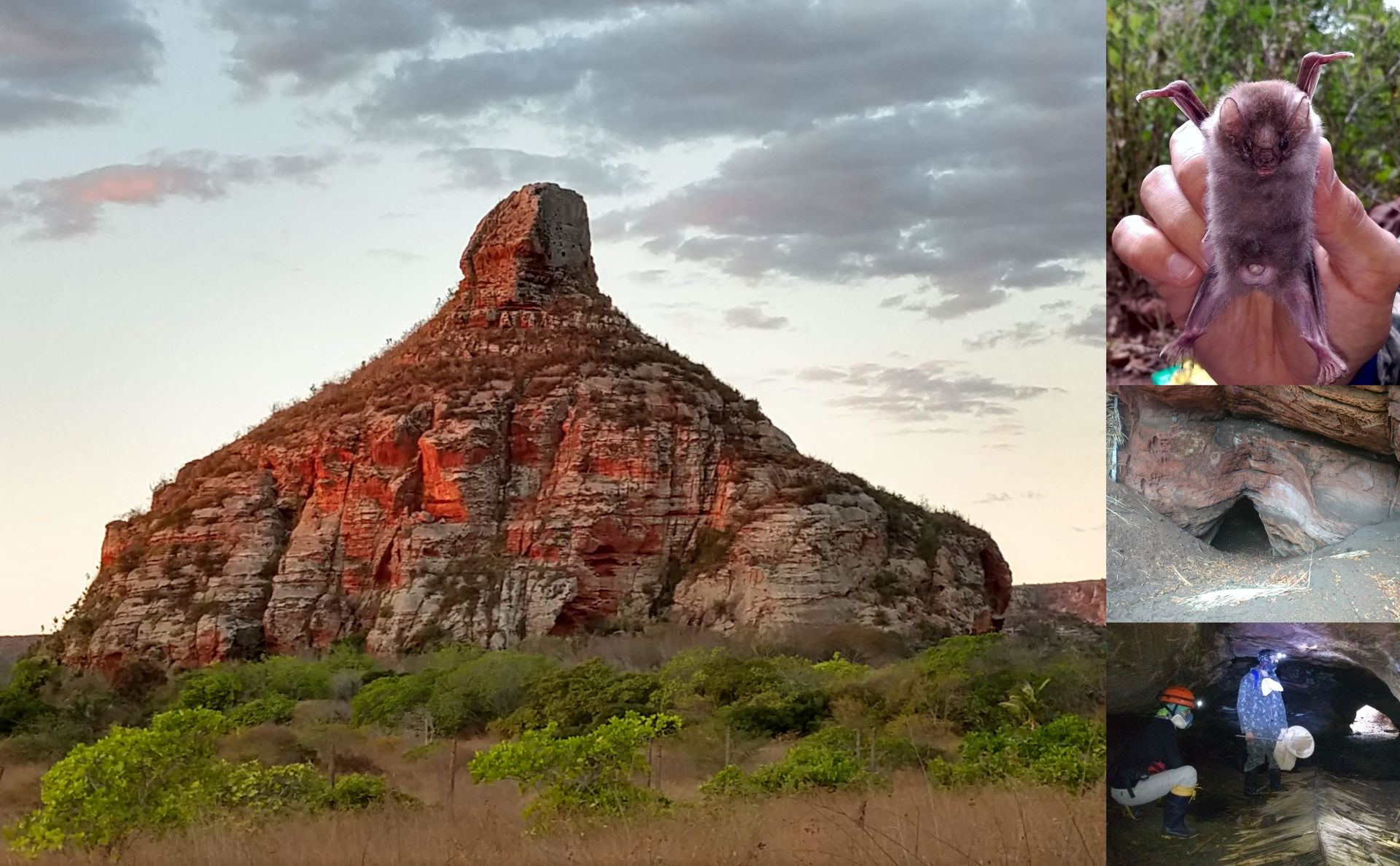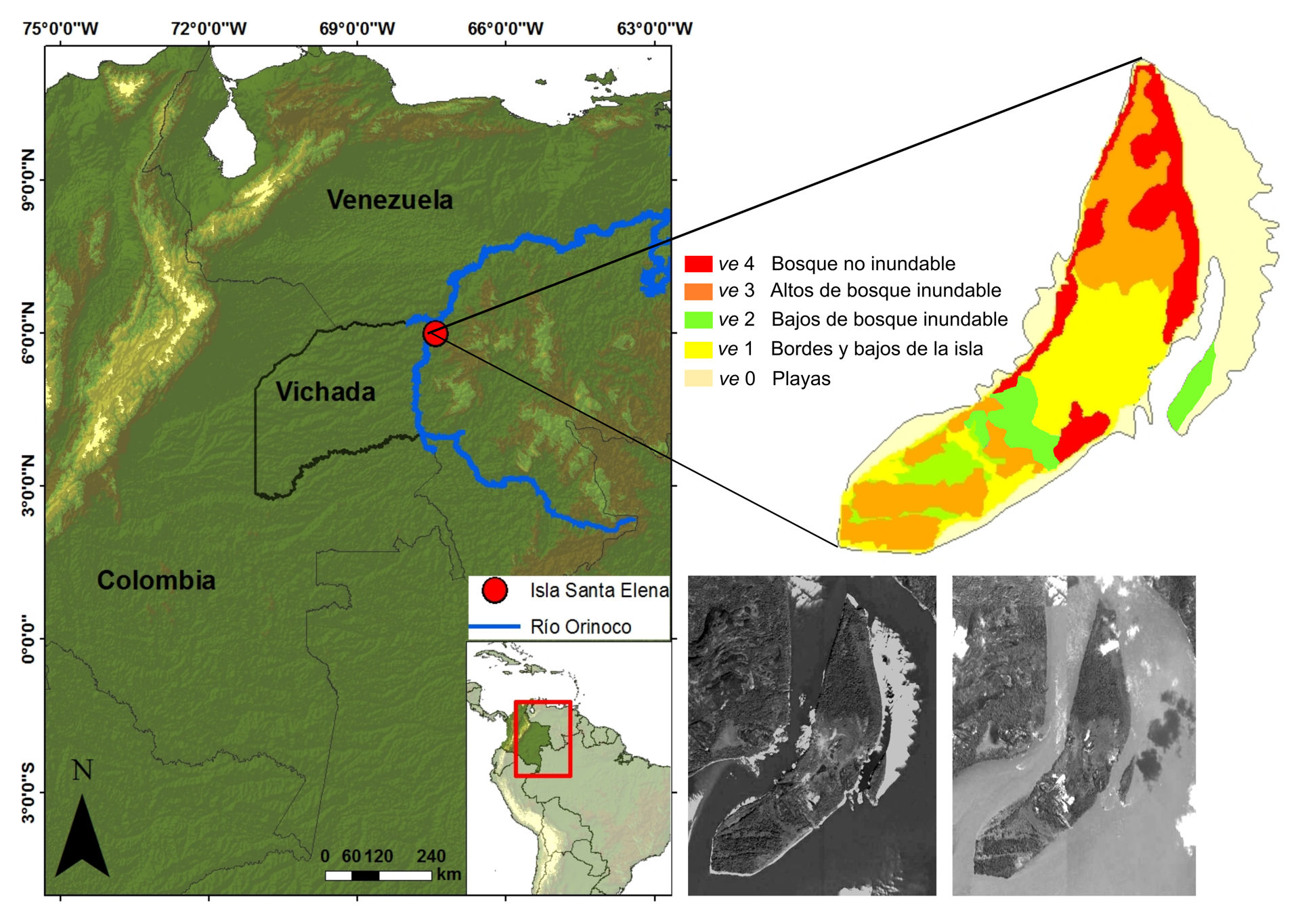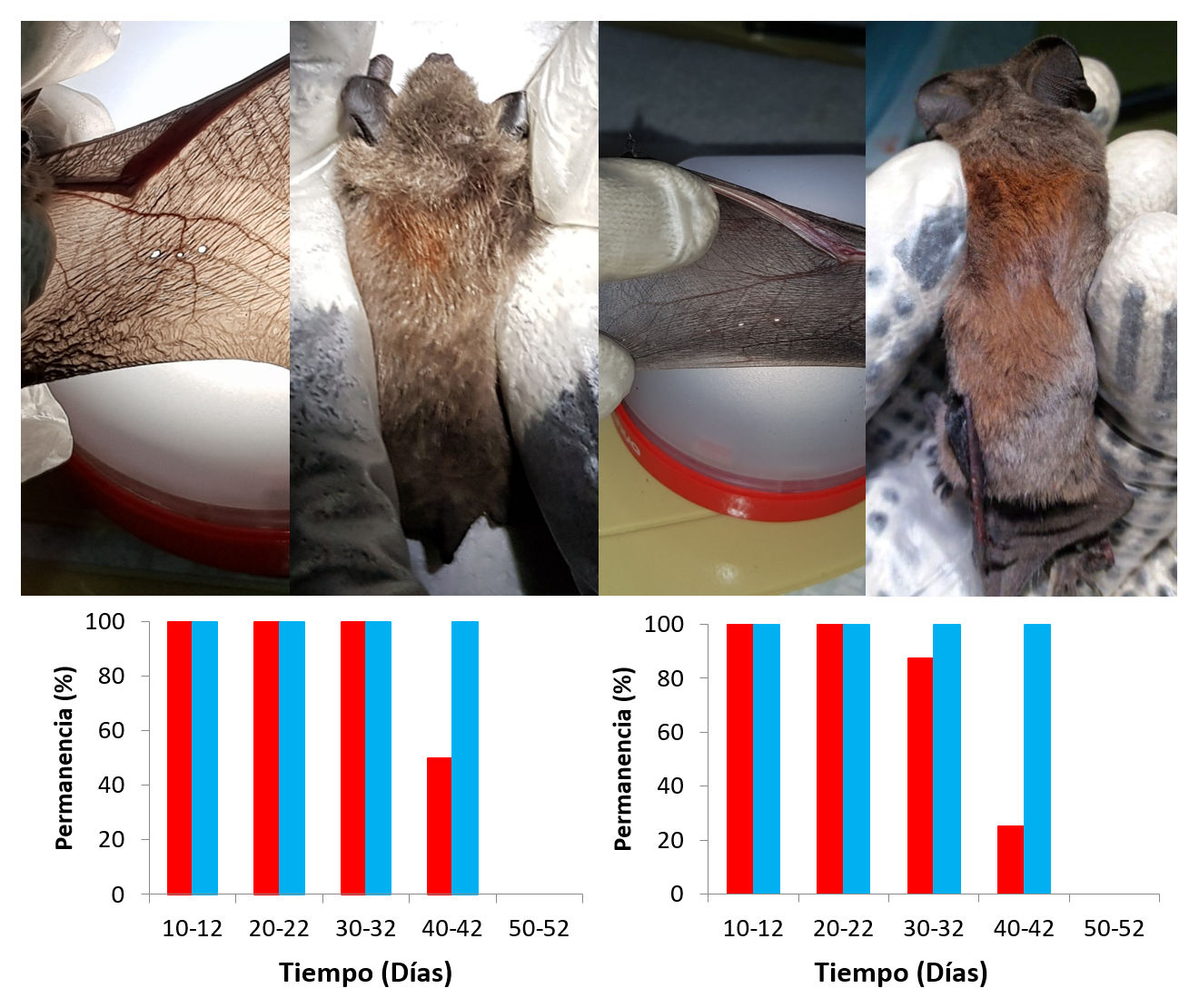Tapa: Vista ventral del basicráneo de ejemplares machos adultos de Cervidae vivientes de América y del Viejo Mundo.
Fotos: Nicolás Chimento. Composición: Nicolás Chimento y Raúl Vezzosi.
Contenido
| Tipo o Sección | Imagen representativa | Título | Autores | Oración resumen | Resumen | |
|---|---|---|---|---|---|---|
| Editorial | Una medida inédita que podría ayudar a cambiar el destino de especies amenazadas desde el ámbito local: el caso de los incentivos públicos, los productores, los pastizales y el venado de las pampas en la Bahía Samborombón | Fernando O. Miñarro | ||||
| Artículo | Sobre la anatomía craneana de Morenelaphus Carette, 1922 (Mammalia, Cervidae) y formas relacionadas: descripción y comparación morfológica del área del basicráneo | Raúl Ignacio Vezzosi, Nicolás Roberto Chimento | Estudio anatómico comparativo de la base del cráneo del ciervo extinto de América del Sur Morenelaphus y su comparación con especies vivientes de cérvidos de América y otras regiones. | Entre los ciervos actuales y fósiles del Nuevo Mundo, Morenelaphus representa el género más conspicuo para el Pleistoceno de Argentina. Sin embargo, su registro fósil en América del Sur es conocido principalmente a través de sus astas, sin haber aportes sobre la anatomía de su cráneo. Con el fin de aclarar algunas cuestiones de la taxonomía y sistemática de los ciervos fósiles sudamericanos, en este caso se describen y analizan los principales rasgos anatómicos del basicráneo de Morenelaphus comparándolo con formas fósiles y vivientes de Cervinae Cervini (Goldfuss 1820), Capreolinae Rangiferini (Brookes 1828) y Odocoileini (Pocock 1923) procedentes de América. Varios rasgos identificados a nivel del basicráneo son únicos del género Morenelaphus, mientras que otros caracteres son compartidos con especies de la Tribu Cervini (Cervus), Odocoileini (Blastocerus, Odocoileus) y Rangiferini (Rangifer). Nuevos registros y futuras comparaciones entre más formas fósiles y vivientes (e.g., Alces alces), sumando más estructuras anatómicas a nivel del cráneo, dentición y postcráneo, servirán para esclarecer la sistemática del grupo dada la complejidad taxonómica y filogenética de las formas fósiles. On the cranial anatomy of Morenelaphus Carette, 1922 (Mammalia, Cervidae) and its relatives: study of the anatomy of the brasicranium. Among South American fossil deer, Morenelaphus is the most conspicuous genus from the Pleistocene beds of Argentina. However, its fossil record in South America is almost known only by antlers, the anatomy of the skull being poorly understood. In order to know the cranial morphologies in fossil and living forms useful to elucidate the systematic taxonomy of some South American deer, we describe and analyze the main anatomical features of the basicranium in Morenelaphus compared with fossil and living Cervinae Cervini (Goldfuss 1820), Capreolinae Rangiferini (Brookes 1828) and Odocoileini (Pocock 1923) forms from America. Several morphologies reported here are observed only in Morenelaphus. However other features are shared with some South American Cervini (Cervus), Odocoileini (Blastocerus, Odocoileus) and also with Rangiferini (Rangifer). Given the taxonomic complexity of South American fossil Cervidae, new records and future comparisons among fossil and living deer (e.g., Alces alces) using more anatomical structures from the braincase, dentition and postcranial bones, will clarify even more the systematic of the group. | ||
| Artículo | Cranial morphological variability of a small Neotropical cat revealed by geometric morphometrics | Raissa Prior Migliorini, Rodrigo Fornel, Carlos B. Kasper | We investigated the hypothesis of the existence of cranium size and shape variation in jaguarundi (Herpailurus yagouaroundi) from different ecoregions in Brazil, in order to understanding how selective pressures, environmental heterogeneity, and/or geographic distance can modulate the evolution of the cranial morphology of this small carnivoran. | The jaguarundi (Herpailurus yagouaroundi) has one of the most extensive latitudinal ranges among felids of the Western Hemisphere. Its wide geographic distribution and range of habitats may result in patterns of cranial morphological variation. Thus, we investigated the hypothesis of the existence of morphological ecotypes adapted to specific environments used by the species. The crania of 54 museum specimens from three different ecoregions in Brazil were digitized in ventral, dorsal, and lateral views. No sexual dimorphism was detected. Our hypothesis was supported by the fact that the specimens from the Amazon were significantly larger than those from the Atlantic Forest and Uruguayan savanna. Cranial shape variation between sexes, as well as among ecoregions, was mostly explained by the effect of size. Correlations between geographical distance and cranial shape were not significant. There was a significant correlation between cranium size and latitude, in a pattern that is the reverse of Bergmann’s rule, with larger specimens in lower latitudes. The environmental variables positively correlated with cranium size indicated that larger cats occurred in regions with greater temperature and precipitation. Resource availability might be the cause of the observed variation in cranium size, since jaguarundis probably show different prey size preferences along the species distribution range. However, more ecological data for most ecoregions are needed to test the “resource rule” and to fully understand the patterns and causes of cranial variation in this cat. Variabilidade morfológica craniana de um pequeno felino neotropical, revelada pela morfometria geométrica. O jaguarundi (Herpailurus yagouaroundi) possui uma das faixas latitudinais mais extensas entre os felídeos do Hemisfério Ocidental. Sua ampla distribuição geográfica e variedade de habitats podem resultar em padrões de variação morfológica do crânio. Assim, investigamos a hipótese da existência de ecótipos morfológicos adaptados aos ambientes específicos utilizados pela espécie. Os crânios de 54 espécimes de museus de três diferentes ecorregiões no Brasil foram digitalizados nas vistas ventral, dorsal e lateral. Não foi detectado dimorfismo sexual no tamanho. Nossa hipótese foi corroborada, pois os espécimes da Amazônia são significativamente maiores do que os da Mata Atlântica e da Savana uruguaia. A variação da forma do crânio entre os sexos, bem como entre ecorregiões, está correlacionada com a variação de tamanho. Correlações entre distância geográfica e forma do crânio não foram significativas. Houve correlação significativa entre tamanho e latitude, em um padrão inverso da regra de Bergmann, com espécimes maiores observados nas menores latitudes. As variáveis ambientais correlacionadas positivamente com o tamanho indicaram felinos maiores ocorrendo em regiões com maior temperatura e precipitação. A disponibilidade de recursos pode ser a causa da variação de tamanho observada, uma vez que aparentemente o jaguarundi preda presas de tamanhos diferentes ao longo de sua distribuição. Porém, são necessários mais dados ecológicos das demais ecorregiões, para testar a “regra do recurso” e elucidar os padrões e causas da variação do crânio deste felino. | ||
| Artículo | Genetic diversity and population structure of the Pampas fox, Lycalopex gymnocercus, in a human-dominated landscape of southern Espinal, Argentina | Brenda R. Pizzano, Orlando Gallo, Raquel Godinho, Emma B. Casanave, Diego F. Castillo | Microsatellites reveal high genetic diversity but no population structure in Pampas fox at southern Argentine Espinal. | Habitat fragmentation and the associated landscape connectivity loss can reduce gene flow among populations, which could lead to a decrease in genetic variability, and an increase in the extinction risk of a species. The main goal of this study was to provide genetic diversity and population structure data for Pampas foxes from the southern Argentine Espinal ecoregion. Through the analyses of 30 tissue samples collected during 2013–2018, we were able to genotype 23 individuals at 18 microsatellite loci. Results indicate high diversity values, and exhibiting an average of 10 alleles per locus (min = 6, max = 13), 0.71 (range = 0.35–0.91) of mean observed heterozygosity and 0.83 (min = 0.61, max = 0.91) of mean expected heterozygosity. Bayesian analyses suggest no population structure. Finally, we did not detect a pattern of isolation by distance. The high habitat adaptability and the generalist feeding behavior of Pampas fox may explain our findings, which are in agreement with the general patterns described for other fox species. The panel of microsatellites employed in this study proved to be suitable for Pampas fox genotyping and it can be used in further genetic assessments needed to validate and expand our understanding of its population genetics. Diversidad genética y estructura poblacional del zorro pampeano Lycalopex gymnocercus en un paisaje antropizado del sudoeste del Espinal argentino. La fragmentación del hábitat y la pérdida asociada de conectividad del paisaje influencian el flujo génico entre poblaciones, lo que puede conducir a una disminución de la variabilidad genética, aumentando el riesgo de extinción de una especie. El objetivo principal de este estudio fue proveer datos sobre la diversidad genética y la estructura poblacional del zorro pampeano en la zona sur de la ecorregión del Espinal argentino. A través del análisis de 30 muestras de tejidos colectadas durante 2013–2018, genotipamos 23 individuos con 18 loci de microsatélites. Nuestros resultados indican valores de diversidad altos, exhibiendo en promedio 10 alelos por locus (mín = 6, máx = 13), 0.71 (mín = 0.35; máx = 0.91) de heterocigosis media observada y 0.83 (mín = 0.61; máx = 0.91) de heterocigosidad esperada. Los análisis bayesianos sugieren la ausencia de estructura poblacional. Finalmente, no se detectó un patrón de aislamiento por distancia. La elevada capacidad de adaptarse a diferentes hábitats y la dieta generalista del zorro pampeano podrían explicar nuestros resultados, los cuales concuerdan con los patrones generales descriptos para otras especies de zorros. El set de microsatélites empleado en este estudio demostró ser adecuado para genotipar al zorro pampeano y podría utilizarse en evaluaciones genéticas adicionales necesarias para validar y ampliar nuestra comprensión de la genética poblacional de la especie. | ||
| Artículo | Relative abundance of a geographically isolated population of red-rumped agouti (Dasyprocta leporina): a first assessment for Trinidad | Sharmila C. Ganpat, Anthony J. Giordano, Luke V. Rostant | We compared the relative abundance (RA) of agouti (Dasyprocta leporina) in a lowland, multi-use recreational forest impacted by urbanization, with a strict nature reserve containing upland secondary forest, and found agouti detection to be influenced by hunting, elevation, proximity to paved roads, and vegetation density. | Many studies have demonstrated the importance of terrestrial mammal fauna to ecosystem functioning and services. To date, however, few studies of mammal abundance in Trinidad and Tobago have been conducted. Our main objective here was to compare the relative abundance (RA) of agoutis (Dasyprocta leporina), an important bushmeat species, in a lowland, multi-use recreational forest surrounded by urbanization, with a former plantation that is now a protected nature reserve containing upland secondary forest. We hypothesized that coarse-scale factors such as hunting, elevation, proximity to paved roads, and vegetation density, would affect the relative abundance of these two agouti populations. As part of the first pilot survey of the ocelot (Leopardus pardalis) on Trinidad, using the same camera setup, we deployed paired camera-trap stations at 10 sites in the recreational forest, and five sites in the smaller nature reserve, along a 1 km² grid of each study site’s trail system between 24 June and 6 November 2016. To test the relative importance of these key ecological factors on agouti relative abundance, we conducted simple linear regressions of each covariate. We found that hunting was significantly associated with lower relative abundance of agouti (p < 0.05), whereas increases in elevation had a significant positive effect on relative abundance of agouti (p < 0.05). Interestingly, we also found a significant inverse relationship between agouti abundance and the proximity to paved roads (p < 0.05), i.e., agoutis’ relative abundance was greater at shorter distances or closer to paved roads. We also found no relationship between vegetation density and agouti relative abundance (p > 0.05). We concluded that hunting, elevation, and proximity to paved roads, all significantly impact the relative abundance index (RAI) of local agouti populations. Abundancia relativa de una población de agutíes (Dasyprocta leporina) aislada geográficamente: una primera evaluación para Trinidad. Numerosos estudios han demostrado la importancia de la fauna de mamíferos terrestres para el funcionamiento y los servicios de los ecosistemas. Sin embargo, hasta la fecha, se han realizado pocos estudios sobre la abundancia de mamíferos en Trinidad y Tobago. Nuestro principal objetivo aquí fue comparar la abundancia relativa (RAI) de agutíes (Dasyprocta leporina), una importante especie de carne de animales silvestres, en un bosque recreativo de tierras bajas de usos múltiples rodeado de urbanización, con una antigua plantación que ahora es una reserva natural protegida que contiene bosque secundario de tierras altas. Planteamos la hipótesis de que factores de escala gruesa como la caza, la elevación, la proximidad a caminos pavimentados y la densidad de vegetación afectarían la abundancia relativa de estas dos poblaciones de agutíes. Como parte de la primera encuesta piloto del ocelote (Leopardus pardalis) en Trinidad, utilizando la misma configuración de cámara, implementamos estaciones de cámaras trampa emparejadas en 10 sitios en el bosque recreativo y cinco sitios en la reserva natural más pequeña, a lo largo de una cuadrícula de 1 km² del sistema de senderos de cada sitio de estudio entre el 24 de junio y el 6 de noviembre de 2016. Para probar la importancia relativa de estos factores ecológicos clave en la abundancia relativa de agutí, realizamos regresiones lineales simples de cada covariable. Encontramos que la caza se asoció significativamente con una menor abundancia relativa de agutí (p < 0.05), mientras que los aumentos en la elevación tuvieron un efecto positivo significativo sobre la abundancia relativa de agutí (p < 0.05). Curiosamente, también encontramos una relación inversa significativa entre la abundancia de agutí y la proximidad a caminos pavimentados (p < 0.05), es decir, la abundancia relativa de agutí fue mayor a distancias más cortas o más cerca de caminos pavimentados. Tampoco encontramos relación entre la densidad de vegetación y la abundancia relativa de agutí (p > 0.05). Concluimos que la caza, la elevación y la proximidad a caminos pavimentados impactan significativamente el índice de abundancia relativa (RAI) de las poblaciones locales de agutí. | ||
| Artículo | Taxonomía de los primates de Colombia: cambios en los últimos veinte años (2000–2019) y anotaciones sobre localidades tipo | Sebastián García-Restrepo, Sebastián O. Montilla | Una revisión bibliográfica sobre el conocimiento taxonómico de primates de Colombia en los últimos 20 años permitió reconocer la presencia de 36 especies y 17 subespecies, de las cuales ocho son endémicas y 25 poseen localidad tipo en el país. | Colombia es uno de los países con mayor riqueza de primates en el mundo. Sin embargo, el número e identidad de las especies ha sido un tema debatido a lo largo de los años. Las primeras descripciones de primates colombianos se remontan a expediciones posteriores a la conquista española. A esto se sumaron las primeras revisiones taxonómicas de géneros y especies en la primera mitad del siglo XX, a partir de literatura y especímenes de museo. Con el objetivo de unificar la información taxonómica de los primates no humanos del país, realizamos una revisión de literatura enfocada en aquellos aportes que han llevado a cambios en los arreglos taxonómicos y nomenclaturales de los últimos 20 años. Además, reunimos información sobre los taxa con localidad tipo en Colombia a partir de revisiones de las descripciones originales. En total, reconocemos la presencia de 36 especies y 17 subespecies, donde los mayores cambios se han dado en los géneros Cebus y Aotus. Reportamos ocho especies endémicas, y 25 taxa con localidades tipo en el país. Consideramos que, de acuerdo con revisiones recientes, las poblaciones del género Cacajao en el país corresponden a C. ouakary (Spix 1823) y, ante la ausencia de evidencia molecular, barreras geográficas y diferenciación fenotípica, indicamos a Pithecia milleri como subpespecie de P. hirsuta (Spix 1823), y a Cheracebus lucifer y C. medemi como subespecies de C. torquatus (Hoffmannsegg, 1807). Finalmente, proponemos el uso de subgéneros para representar las relaciones evolutivas en Saguinus (Leontocebus) y Callicebus (Plecturocebus, Cheracebus). Taxonomy of Colombian primates: changes in the last twenty years (2000–2019) and some taxonomic notes. Colombia is among the countries with the greatest richness of primates in the world. However, the number and identity of species has been a debated topic over the years. The first descriptions of Colombian primates date back to expeditions after the Spanish conquest. Later, the first taxonomic reviews of genera and species were published in the first half of the 20th century, based on literature and museum specimens. To unify the taxonomic information of non-human primates of the country, we conducted a literature review focused on those contributions that have led to changes in the taxonomic and nomenclatural arrangements of the last 20 years. Also, we collected information on taxa with type locality in Colombia from revisions of the original descriptions. We recognize the presence of 36 species and 17 subspecies, where the greatest changes have occurred in the genera Cebus and Aotus. We report 8 endemic species and 25 taxa with type localities in the country. Furthermore, we consider that, according to recent reviews, the populations of the genus Cacajao in the country correspond to C. ouakary (Spix 1823) and, in the absence of molecular evidence, geographic barriers, and phenotypic differentiation, we indicate Pithecia milleri as a subspecies of P. hirsuta (Spix, 1823), and Cheracebus lucifer and C. medemi as subspecies of C. torquatus (Hoffmannsegg, 1807). Finally, we propose the use of subgenera to represent the evolutionary relationships in Saguinus (Leontocebus) and Callicebus (Plecturocebus, Cheracebus). | ||
| Artículo | Nativas versus exóticas: ¿cuánto contribuyen en la dieta del puma Puma concolor en el Parque Nacional Los Glaciares, Patagonia, Argentina? | Cristina Bartolucci, María de las Mercedes Guerisoli, Gabriel M. Martin | Estudiamos a partir del análisis de heces de puma la frecuencia de ocurrencia y el aporte de biomasa relativa de las especies nativas, exóticas y domésticas consumidas en el Parque Nacional Los Glaciares, Santa Cruz, Argentina. | El puma se encuentra actualmente entre los carnívoros más conflictivos de Argentina debido a la depredación de animales domésticos. Su dieta ha sido estudiada en Patagonia, encontrándose un consumo, principalmente, de especies exóticas y nativas. El objetivo de este trabajo fue caracterizar la dieta del puma en el Parque Nacional Los Glaciares (PNLG), provincia de Santa Cruz. Se realizaron recorridas por los principales senderos del PNLG durante los años 2004–2006, donde se colectaron 68 heces de puma. Para determinar los ítem-presa se utilizaron pelos, mandíbulas, maxilares, dientes y plumas encontrados en las heces y se calculó la frecuencia de ocurrencia (FOi) y la biomasa consumida (BC). Se identificaron 19 especies de mamíferos: 14 nativos, cuatro domésticos y uno exótico. Los valores más altos de FOi fueron para la liebre (95.58 %) y el piche (57.37 %), seguido por el caballo (33.82 %). Las especies que más aportaron a la BC fueron la liebre (valores entre 23.68 % y 22.79 %), el caballo (valores entre 21.65 % y 17.97 %) y la oveja (valores entre 16.08 % y 17.12 %). Estos resultados para el PNLG indicarían una tendencia al consumo de especies exóticas y domésticas por sobre las especies nativas. Las especies domésticas serían consumidas por este felino fuera del parque. Futuros estudios deberían orientarse a aumentar el conocimiento sobre la dieta del puma dentro y fuera del PNLG, y a estudiar la disponibilidad de presas nativas para generar información que favorezca la coexistencia entre los productores y los carnívoros. Native versus exotic: how much do they contribute to the diet of the puma Puma concolor in Los Glaciares National Park, Patagonia, Argentina? The cougar is currently among the most conflictive carnivores in Argentina due to the predation of domestic animals. Their diet has been studied in Patagonia, finding a consumption mainly of exotic and native species. The objective of this work was to characterize the cougar’s diet in Los Glaciares National Park (LGNP), Santa Cruz province. Tours of the main trails of the LGNP were carried out during the years 2004–2006, where 68 cougar feces were collected. To determine the prey items, hairs, mandible, jaws, teeth and feathers found in the feces were used, and the frequency of occurrence (FOi) and the biomass consumed (BC) were calculated. Nineteen mammal species were identified: 14 native, 4 domestic and 1 exotic. The highest FOi values were for the hare (95.58 %) and the piche (57.37 %), followed by the horse (33.82 %). The species that contributed the most to the BC were the hare (values between 23.68 % and 22.79 %), the horse (values between 21.65 % and 17.97 %) and the sheep (values between 16.08 % and 17.12 %). These results for LGNP show a trend towards the consumption of exotic and domestic species over native species. The domestic species would be consumed by this feline outside the park. Future studies should focus on increasing the knowledge of the diet of the puma inside and outside of PNLG and in the study of native prey availability, to generate information to promote coexistence between ranchers and carnivores. | ||
| Artículo | Ecological aspects of Dasypus pastasae in the Colombian Altillanura, with comments on activity patterns and its identification via camera traps | Carlos A. Aya-Cuero, Federico Mosquera-Guerra, Camilo Castillo, Diego A. Esquivel, Cesar Rojano, Anderson Feijó | We provided novel information about ecological aspects of the rare Pastaza greater long-nosed armadillo (Dasypus pastasae) in eastern plains of Colombia, including activity patterns, endoparasites, diet, behavior, and described key traits to differentiate simpatric Dasypus species based on camera-trap records. | The Pastaza greater long-nosed armadillo (Dasypus pastasae) is a recently revalidated species and therefore poorly studied from South America. The natural history of this species is virtually unknown in the wild. Here, we describe ecological aspects of D. pastasae including activity patterns, behavioral notes, endoparasite records, and diet information retrieved from riparian forest populations in the eastern plains of Colombia. Additionally, we point out key morphological traits to differentiate D. pastasae from other congeneric armadillos present in Colombia based on camera trap records. Aspectos ecológicos de Dasypus pastasae en la altillanura colombiana, con comentarios sobre patrones de actividad e identificación en cámaras trampa. El armadillo espuelón (Dasypus pastasae) es una especie recientemente revalidada y poco estudiada de América del Sur. La historia natural del espuelón es prácticamente desconocida y son muy escasos los datos de esta especie en vida silvestre. El presente trabajo describe diversos aspectos sobre la historia natural de esta especie, incluyendo patrones de actividad, notas sobre su comportamiento, endoparásitos, así como anotaciones sobre su dieta de poblaciones en bosques riparios de los Llanos orientales en Colombia. Además, destacamos aspectos de su morfología, útiles para diferenciar D. pastasae de otros armadillos presentes en Colombia basados en registros de cámaras trampa. | ||
| Artículo | Aerial insectivorous bats in the Brazilian Pantanal: diversity and activity patterns in response to habitat and microclimate | Cíntia Fernanda da Costa, Adriana Arias-Aguilar, Maria João Ramos Pereira | Our results point out the need to preserve the spatial heterogeneity typical of the Pantanal biome as different habitats may support different local bat assemblages, while offering exclusive resources for different bats. | In tropical environments, landscape heterogeneity is a key factor determining species richness gradients, while climatic conditions are commonly related to the occurrence and activity patterns of most animal species. We used acoustic monitoring data to test the influence of microclimate variables and habitat on the activity pattern of aerial insectivorous bats in three distinct environments in northern Pantanal, Brazil—Cambarazal, Murundu field and riparian area. We hypothesized that foraging and feeding activities should be positively related to humidity and temperature; and species composition should differ between habitats. In 30 sampling nights, we obtained 6049 records and identified 16 species and three species complexes distributed in five families. There were no significant differences in species richness between the three habitats, but the riparian area, the most heterogeneous environment sampled, presented the highest levels of foraging and feeding activities. Species composition varied with the sampled habitat, demonstrating that different species use and perceive distinct landscapes in different ways. Only the foraging activity of open-space bats responded to the interaction between relative humidity and different habitat types during the Pantanal’s dry season. Our results, obtained exclusively by acoustic sampling, show that many aerial insectivore species and activity patterns are subsampled in studies done exclusively with mist-nets. Morcegos insetívoros aéreos no Pantanal brasileiro: diversidade e padrões de atividade em resposta ao habitat e ao microclima. Em ambientes tropicais, a heterogeneidade da paisagem é um fator chave na determinação de gradientes de riqueza de espécies, enquanto as condições climáticas são comumente relacionadas aos padrões de ocorrência e atividade da maioria das espécies animais. Utilizamos dados de monitoramento acústico para testar a influência das variáveis do microclima e do habitat no padrão de atividade de morcegos insetívoros aéreos em três ambientes distintos no norte do Pantanal, Brasil — Cambarazal, campo de Murundu e área ripícola. Nossa hipótese é que as atividades de navegação e forrageamento devem estar positivamente relacionadas à umidade e temperatura; e a composição das espécies deve diferir entre os habitats. Em 30 noites de amostragem, obtivemos 6049 registros e identificamos 16 espécies e três complexos de espécies distribuídas em cinco famílias. Não houve diferenças significativas na riqueza de espécies entre os três habitats, mas a área ripária, o ambiente mais heterogêneo amostrado, apresentou os maiores níveis de atividades de navegação e forrageamento. A composição das espécies variou com o habitat amostrado, demonstrando que diferentes espécies usam e percebem paisagens distintas de maneiras diferentes. Apenas a atividade de navegação dos morcegos de espaço-aberto respondeu à interação entre humidade relativa do ar e os diferentes tipos de habitat durante a estação seca do Pantanal. Nossos resultados, obtidos exclusivamente por amostragem acústica, mostram que muitas espécies de insetívoros aéreos e padrões de atividade são subamostrados em estudos feitos exclusivamente com redes de neblina. | ||
| Nota | El huillín Lontra provocax en la provincia del Chubut: distribución histórica y situación actual | Laura Fasola, Claudio Chehébar, Ignacio Roesler, Leonardo Buria, Hernán Pastore, Alicia Darré | Reconstruimos la distribución histórica y actual del huillín en Chubut, en base a bibliografía, relatos y un nuevo registro, y resaltamos la necesidad de confirmar su presencia en distintas localidades de la provincia para analizar obstáculos para su recuperación. | La distribución actual del huillín Lontra provocax en la Patagonia continental argentina representa ca. 20% de su distribución histórica, con una única población estable conocida que se encuentra en el suroeste de la cuenca del Río Limay (límite de Neuquén y Río Negro). Aquí reconstruimos la distribución histórica de la especie en la provincia del Chubut en base a bibliografía; además, recopilamos información sobre la presencia potencial y confirmada de la especie e informamos un registro actual para la provincia. Finalmente analizamos estos avistajes con relación a la situación histórica y la importancia para la restauración de las poblaciones de huillín de la provincia del Chubut. The southern river otter Lontra provocax in the province of Chubut: historical distribution and current situation. The present range of the southern river otter Lontra provocax in Argentinean continental Patagonia represents only c. 20% of its original distribution, with only one known population that is found in the southwestern area of the Río Limay basin (border between Neuquén and Río Negro provinces). Based on bibliography, we reconstruct the historic distribution of the species in Chubut, we compile information on its potential and confirmed presence, and report a new sighting for the province. Finally, we analyze these sightings in relation to the original situation and its relevance for the restoration of the southern river otter populations of Chubut province. | ||
| Artículo | Morcegos cavernícolas do carste arenítico do Parque Nacional do Catimbau, Nordeste do Brasil | Edson Silva Barbosa Leal, Enrico Bernard | In a study carried out in 53 caves of Catimbau (northeastern Brazil) National Park, 16 species of bats of four families were recorded, including four endangered species, and two caves held exceptionally large bat populations. | A Caatinga do Brasil tem um alto potencial espeleológico e uma rica fauna de morcegos, sendo uma região prioritária para estudos e inventários sobre morcegos cavernícolas. Apresentamos aqui a primeira lista de espécies de morcegos cavernícolas do carste arenítico do Parque Nacional do Catimbau, em Pernambuco, no Nordeste do Brasil. Em 53 cavidades foram registrados 16 táxons e 13 gêneros de morcegos das famílias Phyllostomidae, Mormoopidae, Natalidae, Furipteridae e Emballonuridae. Populações de quatro espécies ameaçadas (Furipterus horrens, Lonchorhina aurita, Xeronycteris vieirai e Natalus macrourus) foram localizadas em oito cavernas, incluindo duas bat caves que abrigam populações excepcionais de morcegos. Lonchophylla inexpectata foi registrada em cavernas pela primeira vez. Tanto o potencial espeleológico quanto a riqueza de espécies locais não foram completamente amostrados, indicando que novas colônias e espécies ainda podem ser registradas na área estudada. Além da contribuição científica, nossos dados podem ser úteis para um futuro Plano de Manejo para o Parque Nacional do Catimbau, e também podem contribuir para algum ordenamento do espeleoturismo na área. Cave dwelling bats of the sandstone karst of Catimbau National Park, northeast Brazil. The Brazilian Caatinga has a high speleological potential and a rich bat fauna, being a priority region for studies and inventories on cave dwelling-bats. Here, we present the first species’ list of cave dwelling-bats of the sandstone karst of the Catimbau National Park, in Pernambuco, northeastern Brazil. Samplings in 53 caves resulted in 16 taxa and 13 genera of bats of the families Phyllostomidae, Mormoopidae, Natalidae, Furipteridae and Emballonuridae. Populations of four endangered species (Furipterus horrens, Lonchorhina aurita, Xeronycteris vieirai, and Natalus macrourus) were located in eight caves, including two bat caves holding exceptionally large bat populations. Lonchophylla inexpectata was recorded for the first time in caves. Both the local speleological potential and the bat species richness were not completely investigated, pointing out that new colonies and species may still be recorded in the studied area. Besides the scientific contribution, our data can be useful for a future management plan for the Catimbau National Park and can also contribute to set some ordering in the existing speleotourism in the area. | ||
| Artículo | Estabilidad espacial como predictor de riqueza de mamíferos en islas fluviales de la Orinoquía | Mariana Botero, Sebastián O. Montilla, Hugo Mantilla-Meluk | Evaluamos la repartición espacial de la riqueza de mamíferos al interior de una isla fluvial del Orinoco y evidenciamos que existen diferencias mediadas por el nivel de inundación de los hábitats y por la capacidad de establecimiento de las especies. | Entre febrero y julio de 2015 se evaluó de manera sistemática la composición del ensamblaje de mamíferos de la isla fluvial Santa Elena, ubicada en la cuenca baja del río Orinoco en el departamento del Vichada, Colombia. Se implementaron métodos de muestreo complementarios que incluyeron parcelas, cámaras trampa, redes de niebla y observaciones ad libitum. Con el objetivo de evaluar el efecto de la estabilidad espacial sobre la distribución de la riqueza de la mastofauna al interior de la isla, se reclasificaron y jerarquizaron imágenes satelitales correspondientes a escenarios de menor y mayor inundación, de acuerdo con la estabilidad espacial en el período de muestreo. Reportamos la presencia de 31 especies de mamíferos en siete órdenes y 14 familias. Considerando que en el departamento se han registrado 118 especies de mamíferos, nuestros resultados corroboran la condición de depauperación en sistemas insulares documentada en estudios análogos. Además, se reportan diferencias significativas en la riqueza de especies de mamíferos entre hábitats en el sistema insular. Estas diferencias estuvieron representadas por una mayor riqueza de especies en los hábitats estables y menos afectados por la inundación, en comparación con aquellos mayormente afectados, que acumularon un menor número de especies, fenómeno denominado aquí «efecto de centro de isla». Finalmente, los resultados sugieren que la repartición espacial de la riqueza de mamíferos al interior de la isla es un proceso selectivo mediado por: a) estabilidad espacial de la isla, y b) capacidad de dispersión y establecimiento de las especies. Spatial stability as a predictor of mammal richness in fluvial islands of the Orinoco River basin. Between February and July 2015, the composition of mammalian assemblages of the Santa Elena River island, located at the lower basin of the Orinoco River in the department of Vichada, Colombia, was thoroughly assessed. Complementary sampling methods were implemented, including plots, camera traps, mist nets and ad libitum observations. In order to test for the effect of spatial stability on mammalian species distribution within the island, we reclassiffied and scored satellite images of the island, corresponding to scenarios of lower and higher flooding, according to the spatial stability in the sampling period. We report the presence of 31 mammal species in seven orders and 14 families. Considering that 118 mammal species have been recorded in the department, these results corroborate the impoverishment condition of island systems, previously documented in analogous studies. Significant differences are reported in mammal species richness between habitats in the Santa Elena insular system. These differences were represented by higher species richness in stable habitats less affected by flooding, compared to those more affected habitats that accumulated a lower number of species, a phenomenon herein named as “core island effect”. Finally, the results suggest that the spatial distribution of mammalian species richness within the island is a selective process mediated by: a) spatial stability of the island, and b) species dispersal and establishment capability. | ||
| Nota | Uso de dos marcas temporales en dos especies de murciélagos: Myotis chiloensis (Chiroptera: Vespertilionidae) y Tadarida brasiliensis (Chiroptera: Molossidae) | Francisca Puelma-Diez, Nélida R. Villaseñor, Martín A.H. Escobar | En dos especies de murciélagos de pequeño tamaño, Myotis chiloensis y Tadarida brasiliensis, encontramos que dos marcas temporales (perforación del patagio y tintura de pelo) presentaron similar tiempo de permanencia (40–42 días). | El uso de marcas inadecuadas en murciélagos ha sido frecuente y la aplicación de marcas no permanentes ha sido escasa. Medimos la permanencia de dos marcas temporales (perforación del patagio y tintura de pelo) en dos especies de murciélagos de pequeño tamaño en la zona mediterránea de Chile central. Ambas marcas presentaron similares resultados en tiempo de duración (40–42 días), aunque la perforación del patagio tuvo mayor duración en una mayor proporción de individuos marcados en ambas especies de murciélagos. Los resultados de nuestro estudio aportan a la identificación de técnicas apropiadas para el monitoreo y seguimiento poblacional de murciélagos. Temporary marking of two species of bats: Myotis chiloensis (Chiroptera: Vespertilionidae) and Tadarida brasiliensis (Chiroptera: Molossidae). The selection of inappropriate marking methods for bats has been a common issue, and the use of non-permanent tags has been scarce. We measure the permanence of two temporary marks (patagium piercing and hair dyeing) in two species of small bats in the Mediterranean-climate area of central Chile. Both methods exhibited similar maximum duration (40–42 days); however, the patagium perforation lasted longer in a greater proportion of individuals than the hair dyeing for both bat species. Our results contribute to the identification of appropriate techniques for the monitoring and tracking of bat populations. | ||
| Resumen de tesis | Evaluación del impacto por descortezamiento ocasionado por la ardilla de vientre rojo, Callosciurus erythraeus, sobre sistemas arbóreos en el partido de Luján y alrededores | Paula A. Pedreira | Tesis de Doctorado en Ciencias Aplicadas. Departamento de Ciencias Básicas. Universidad Nacional de Luján, e Instituto de Ecología y Desarrollo Sustentable (INEDES, UNLu–CONICET), Buenos Aires, Argentina. Directores: Mariela Borgnia y Eduardo Penon. | |||
| Resumen de tesis | Parasitismo en roedores sigmodontinos: aspectos taxonómicos, ecológicos y patrones de distribución de los platelmintos y acantocéfalos en Argentina | Natalia B. Guerreiro Martins | Tesis de Doctorado en Ciencias Naturales. Facultad de Ciencias Naturales y Museo, Universidad Nacional de La Plata, Argentina. Directoras: Graciela T. Navone y María del Rosario Robles. | |||
| Obituario | Obituario: Daniela Paula Montes de Oca (15/04/1988 – 28/08/2020) | María Victoria Vadell, Rosario Lovera | Daniela Paula Montes de Oca (15/04/1988 – 28/08/2020) |



